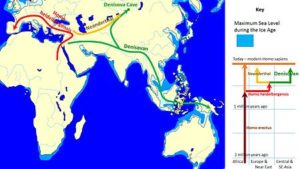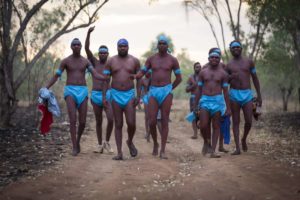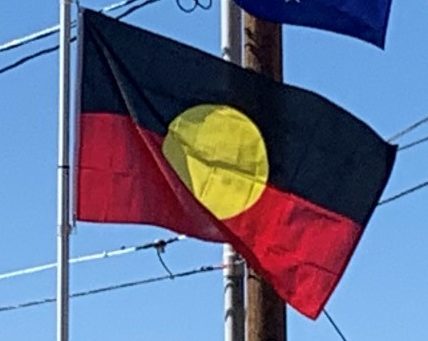The same genetic study of 2011 found evidence that Aboriginal peoples carry some of the genes associated with the Denisovan (a species of human related to but distinct from Neanderthals) peoples of Asia; the study suggests that there is an increase in allele sharing between the Denisovans and the Aboriginal Australians genome compared to other Eurasians and Africans. Examining DNA from a finger bone excavated in Siberia, researchers concluded that the Denisovans migrated from Siberia to tropical parts of Asia and that they interbred with modern humans in South-East Asia 44,000 years ago, before Australia separated from Papua New Guinea approximately 11,700 years BP. They contributed DNA to Aboriginal Australians along with present-day New Guineans and an indigenous tribe in the Philippines known as Mamanwa. This study makes Aboriginal Australians one of the oldest living populations in the world and possibly the oldest outside of Africa, confirming they may also have the oldest continuous culture on the planet. The Papuans have more sharing alleles than Aboriginal peoples. The data suggest that modern and archaic humans interbred in Asia before the migration to Australia.

One 2017 paper in Nature evaluated artifacts in Kakadu and concluded “Human occupation began around 65,000 years ago”.
A 2013 study by the Max Planck Institute for Evolutionary Anthropology found that there was a migration of genes from India to Australia around 2000 BCE. The researchers had two theories for this: either some Indians had contact with people in Indonesia who eventually transferred those genes from India to Aboriginal Australians, or that a group of Indians migrated all the way from India to Australia and intermingled with the locals directly.
In a 2001 study, blood samples were collected from some Warlpiri members of the Northern Territory to study the genetic makeup of the Warlpiri Tribe of Aboriginal Australians, who are not representative of all Aboriginal Tribes in Australia. The study concluded that the Warlpiri are descended from ancient Asians whose DNA is still somewhat present in Southeastern Asian groups, although greatly diminished. The Warlpiri DNA also lacks certain information found in modern Asian genomes, and carries information not found in other genomes, reinforcing the idea of ancient Aboriginal isolation.

Aboriginal Australians are genetically most similar to the indigenous populations of Papua New Guinea, and more distantly related to groups from East Indonesia. They are quite distinct from the indigenous populations of Borneo and Malaysia, sharing relatively little genomic information as compared to the groups from Papua New Guinea and Indonesia. This indicates that Australia was isolated for a long time from the rest of Southeast Asia, and remained untouched by migrations and population expansions into that area.
Aboriginal Australians possess inherited abilities to stand a wide range of environmental temperatures. Aboriginal people were observed to sleep naked on the ground in below-freezing conditions where the temperatures easily rose to above 40 degrees Celsius during the day. Aboriginal people of Tasmania would sleep in snow drifts wearing only an animal skin. According to National Geographic magazine, it is believed that this ability is due to a beneficial mutation in the genes which regulate hormones that control body temperature.
